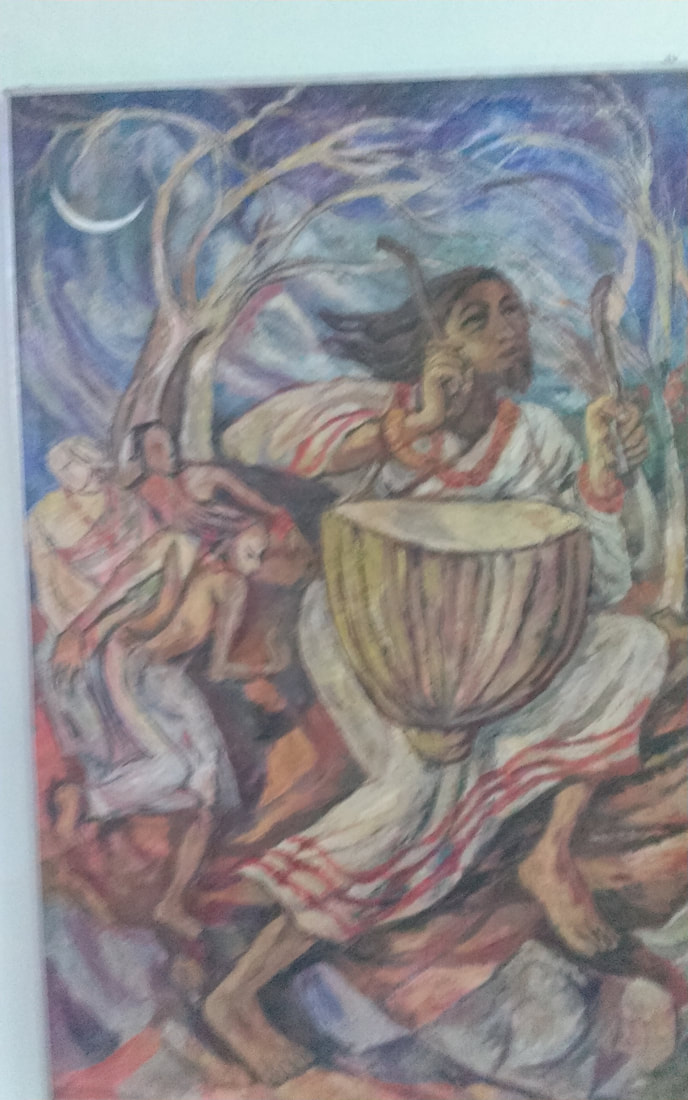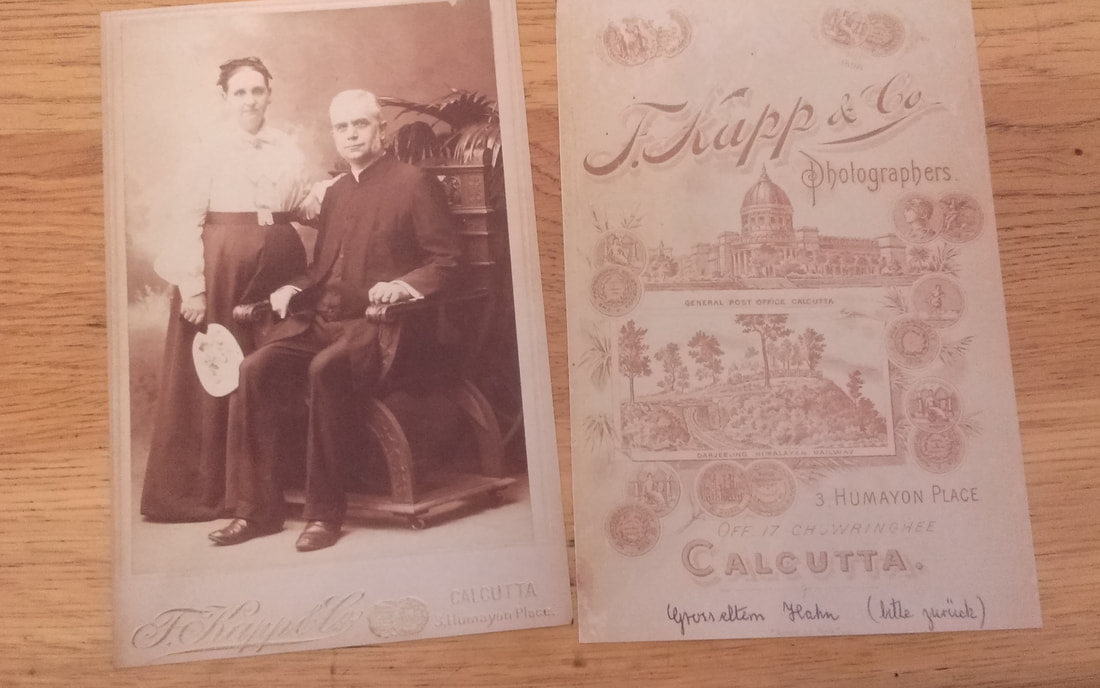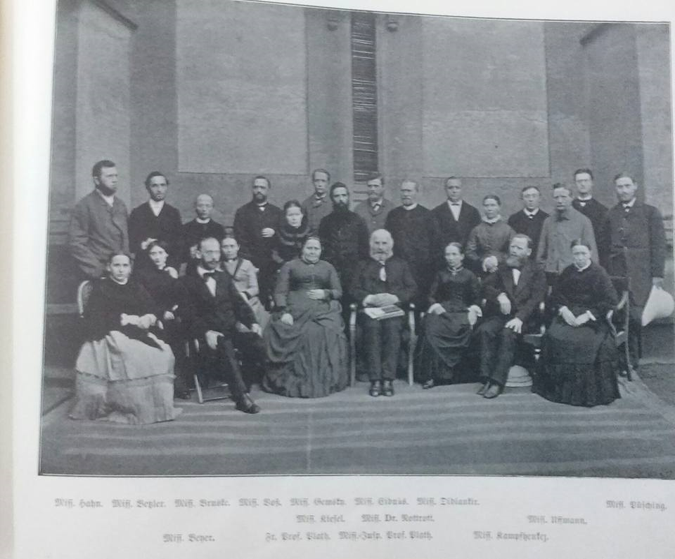|
...................... This is the first part of the the first of two lectures presented last week to the students and faculty of Navin Doman Seminary. i will be breaking it down into smaller parts, for some you may have seen some of this in a post before. but remember this is all basically new to those who wete impacted by this story the most. ...................... I’ve been studying this research for over 5 years. I have had the advantage of finding a lot of material online. .. and as I told you yesterday, it was the diary of my great great grandmother that sparked my interest in this story. It began as a search for a forgotten family story. We have had four generations of missionaries to India, my father being the fourth, but we knew nothing about the first generation. Many people in America are interested in their Ancestry story. America is made up of a people from all over the world. Millions of Americans have German ancestors, but mine have a unique ancestor story for they migrated from Germany to India before going to America. Doris and Ferdinand Hahn are my great great grand parents. Let me tell you how they met. Ferdinand was attending the Gossner Mission school in Berlin, and another student with him was Wilhelm Voss, who spoke often about his pietist family. He also spoke fondly of his younger sister. So on the day that they were being commissioned to go to India, Wilhelm’s parents and his sister came to wish him goodbye. Ferdinand immediately knew she was the one he wanted to marry. She was only 16, but he asked, Will you marry me? And she immediately replied, Yes! Her parents also immediately said yes! Because Doris also wanted to go to India to be a missionary. is it Dr Farabehn's wife In my research, I was frustrated to find that the contribitions of women were hardly ever mentiomed. So when I finish telling the story about Ferdinand I shall write a story about Doris, who inspired me. She did mamy things other than write a diary. Since she was only 16, it was decided that she should stay in Germany and apprentice to become a teacher, while Ferdinand settled in India. Doris came to India in 1871, they got married in Christ Church in Ranchi. [Note of intetest: 25 years later, their oldest daughter, my great grandmother, got married on the same day, 8 December, in the same Church. So it became a family tradition. ..................... Let me tell you about Ferdinand Hahn in his childhood. He lived in a small town outside of Berlin, named Ketzin, born into a shoemaker family, and it was expected that he also should become a shoemaker. But he was very smart, he liked to go to school. But at the time in Germany ( then Prussia) free school was only available to 12 years of age. For this reason the pastor of the church in Ketzin decided to train Ferdinand himself. Ferdinand learned all the subjects he would have had in high school, called a Gymnasium. It was too expensive for his family to send him for higher education, as they were only shoemakers. So he learned everything from the pastor and books. He learned French and Greek and Latin, and History and Philosophy, and also a little Theology. All this on his own. His favorite thing to read was to read about the 17th century missionaries, like Ziegenbalg. He found their life very interesting, and wondered if he could be a shoemaker in India? Ferdinand then experienced a spiritual awakening and wanted to go anywhere to serve God. He heard about the Pietist in Berlin, Johannes Evangelista Gossner. Even though Gossner had already passed away, there was his school in Berlin, a MIssions school teaching the teachings of Gossner and preparing people for service to all humanity. Gossner’s taught that faith is both an inner and outer expression. One must live a life of following God, but one must also serve other people as a true outpouring of that relationship. This was how God is evident in our lives. After three years in Berlin, Ferdinand Hahn came to India in 1868. When he arrived it was just a few months before a missionary conference of all the German Gossner missionaries in Chotanagpur. Ferdinand was looking forward to learn from the seasoned missionaries. But instead when anout twelve of them gathered their meetimg was filled with disagreement. What resulted after this meeting was that the older missionaries, who had been sent out by Gossner joined the Anglican mission. The newer missionaries who came out after Gossners death stayed in the Gossner mission. So as of 1869 the Gossner mission started afresh with a new constitution. This is a picture of the 1871 missionary conference. The two in the middle are Inspector Plath from Berlin and his wife.
Alfred Nottrott is standing behind them, he was already working in Chaibasa, mostly among the Munda. He was already encouraging the people to worship in their own language (a primary teaching of Gossner) In about 1888 Nottrott became the President of the Mission. This is very important because Nottrott was very different from Ferdinand, who had had a very informal education. Nottrott had his education in the best university for Theology in Germany at the time, in Halle University.. So these two men already have different backgrounds. But over time they become the leaders of the Gossner mission in Chotanagpur. [Note: Alfred Nottrott is my great great uncle. The oldest son of his brother married the oldest daughter of Ferdinand and Doris, and are my great grand parents, who worked in Chattisghar]
0 Comments
Leave a Reply. |
2016 -2020These musings include the journey of my writing on the history of my great great grandparents and the travels for research to India, Germany and other places of interest. Archives
June 2020
Categories |



 RSS Feed
RSS Feed